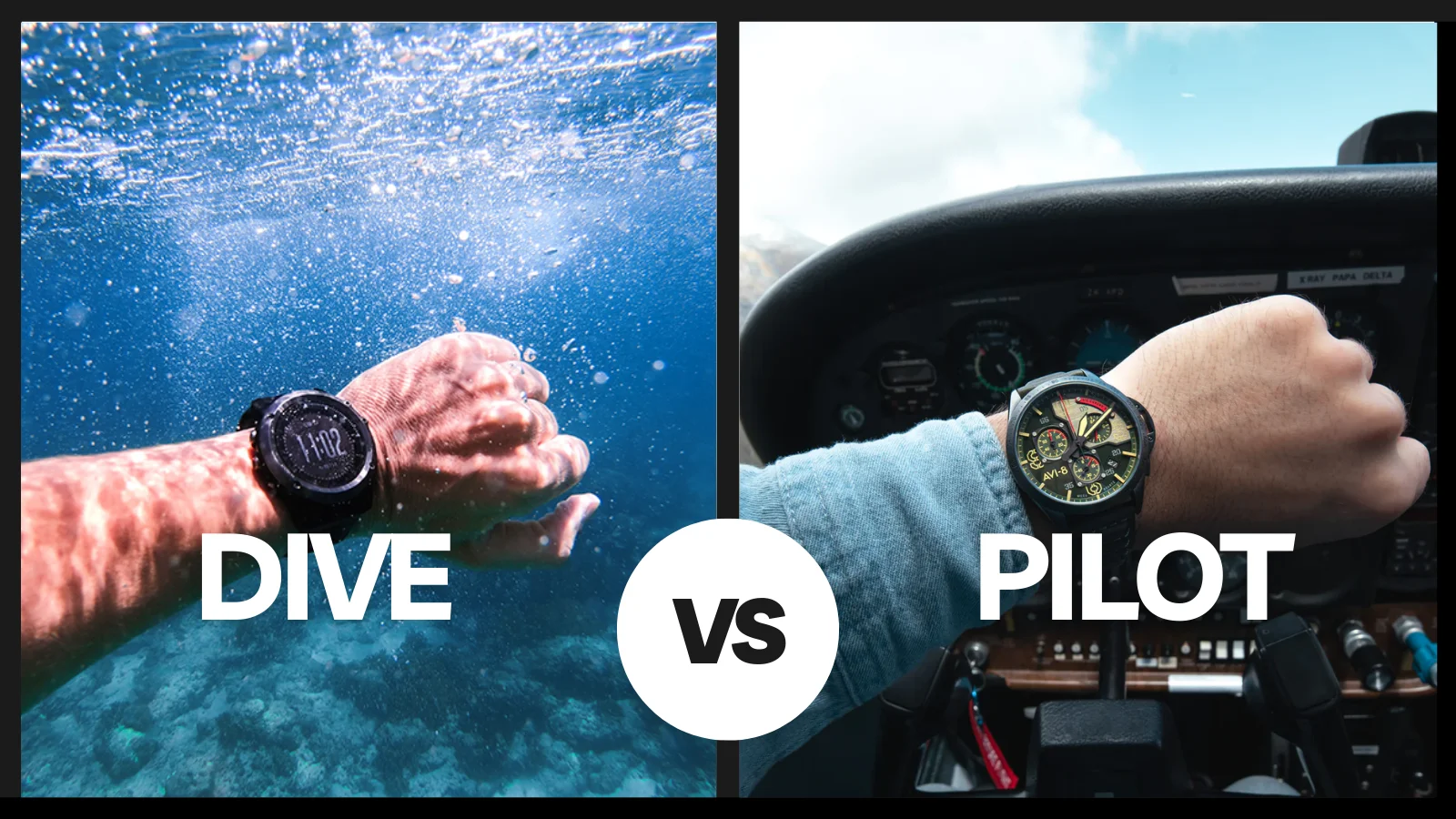Whether you’re drawn to the rugged nature of a dive watch or the precision of an aviation watch, knowing the differences between these two watch types is essential.
Dive watches and aviation watches are both specialized timepieces designed to meet specific needs. While they share some similarities, such as the use of a rotating bezel and robust construction, there are significant differences that set them apart. Below are six key differences that highlight what sets these two watch categories apart.
1. Purpose/Functionality
The primary function of a dive watch is to provide essential information to divers, such as time elapsed, decompression time, and depth, while also being reliable and durable in a harsh aquatic environment.
A reliable dive watch helps prevent decompression sickness by alerting divers to time spent at specific depths. Moreover, many divers use their watches as backups to drive computers, enhancing safety measures.
In contrast, aviation watch provides pilots with essential data during flight. This includes tracking time, measuring speed, and navigating through various time zones. The reliability of an aviation watch can significantly impact a pilot’s ability to make informed decisions during flight operations.
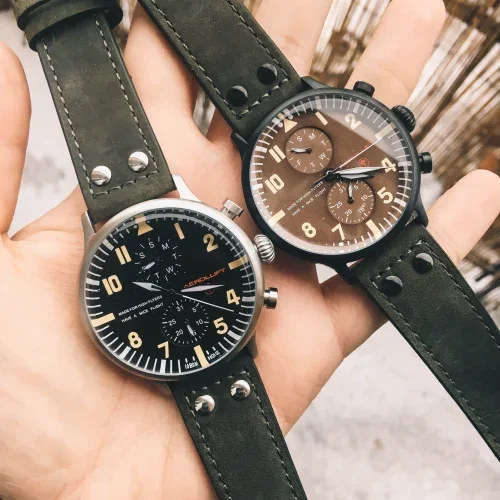
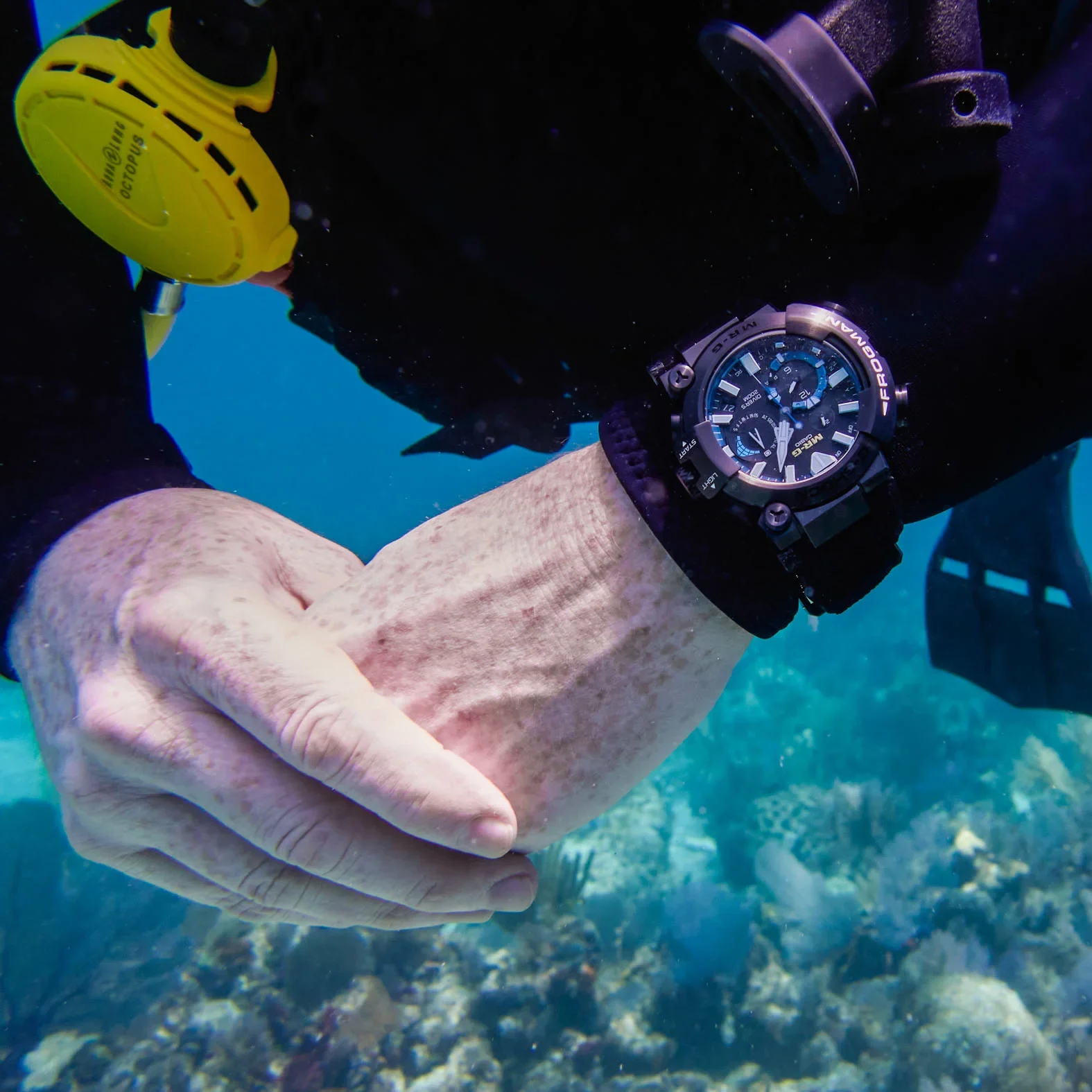
2. Water Resistant
Dive watches are outstanding for their exceptional water resistance, typically rated at a minimum of 200 meters (656 feet) or more. This level of protection ensures that the watch can withstand the high pressures encountered during deep dives.
Conversely, aviation watches are not primarily designed for underwater use and usually have lower water resistance ratings. While some aviation watches may be water-resistant, they are generally not equipped for the depths that dive watches can handle.
3. Bezel & Complication
Dive watches feature a unidirectional rotating bezel that allows divers to track elapsed time underwater accurately. This bezel allows divers to set a reference point with the minute hand, enabling them to monitor their remaining time underwater accurately.
Its unidirectional nature ensures that any accidental movement only increases the elapsed time, thus enhancing safety by preventing divers from underestimating their dive duration.
In contrast, aviation (pilot) watches are equipped with a slide rule bezel or a tachymeter scale. These features enable pilots to perform vital calculations, such as fuel consumption and speed, directly on their watch.
Moreover, chronograph functions allow for precise timing of various flight operations, while GMT capabilities enable tracking of multiple time zones.
This combination of features enhances a pilot’s navigation efficiency and situational awareness during complex flight operations.
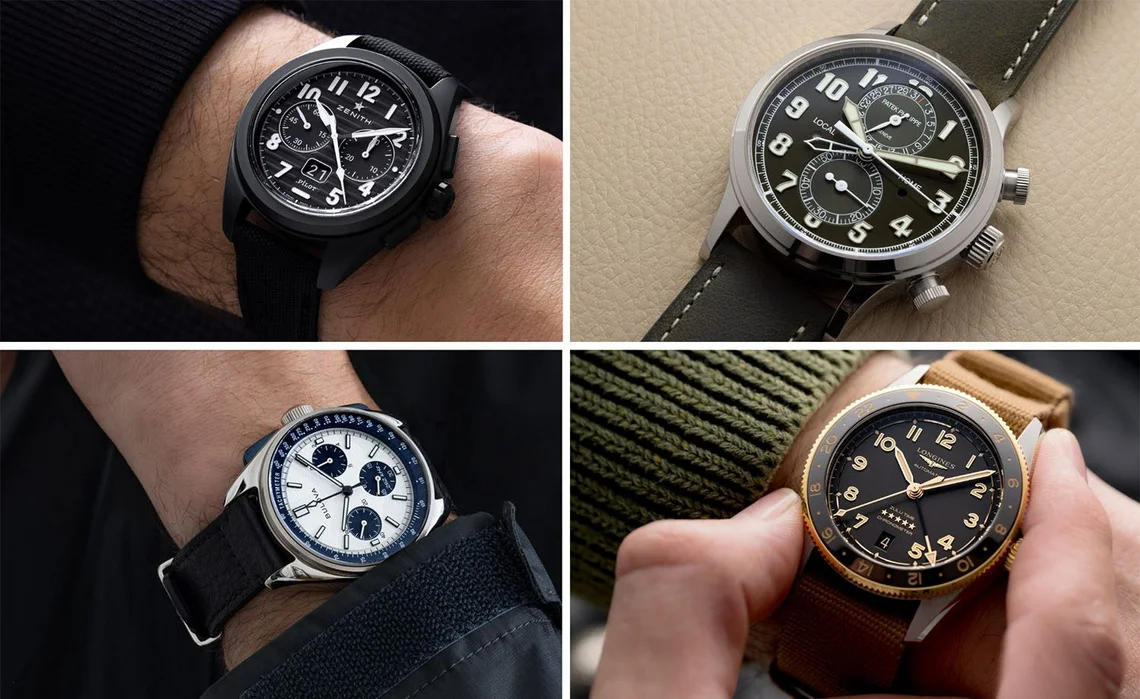
4. Case & Build
Regarding construction, dive watches are built for durability, often made from corrosion-resistant materials such as stainless steel or titanium. This robust construction ensures they can withstand the harsh conditions of diving, including saltwater exposure.
On the other hand, aviation watches prioritize a lightweight yet sturdy build, making them comfortable for extended wear during flights. The materials used often balance strength with reduced weight, ensuring that pilots can wear them without added bulk.
5. Legibility
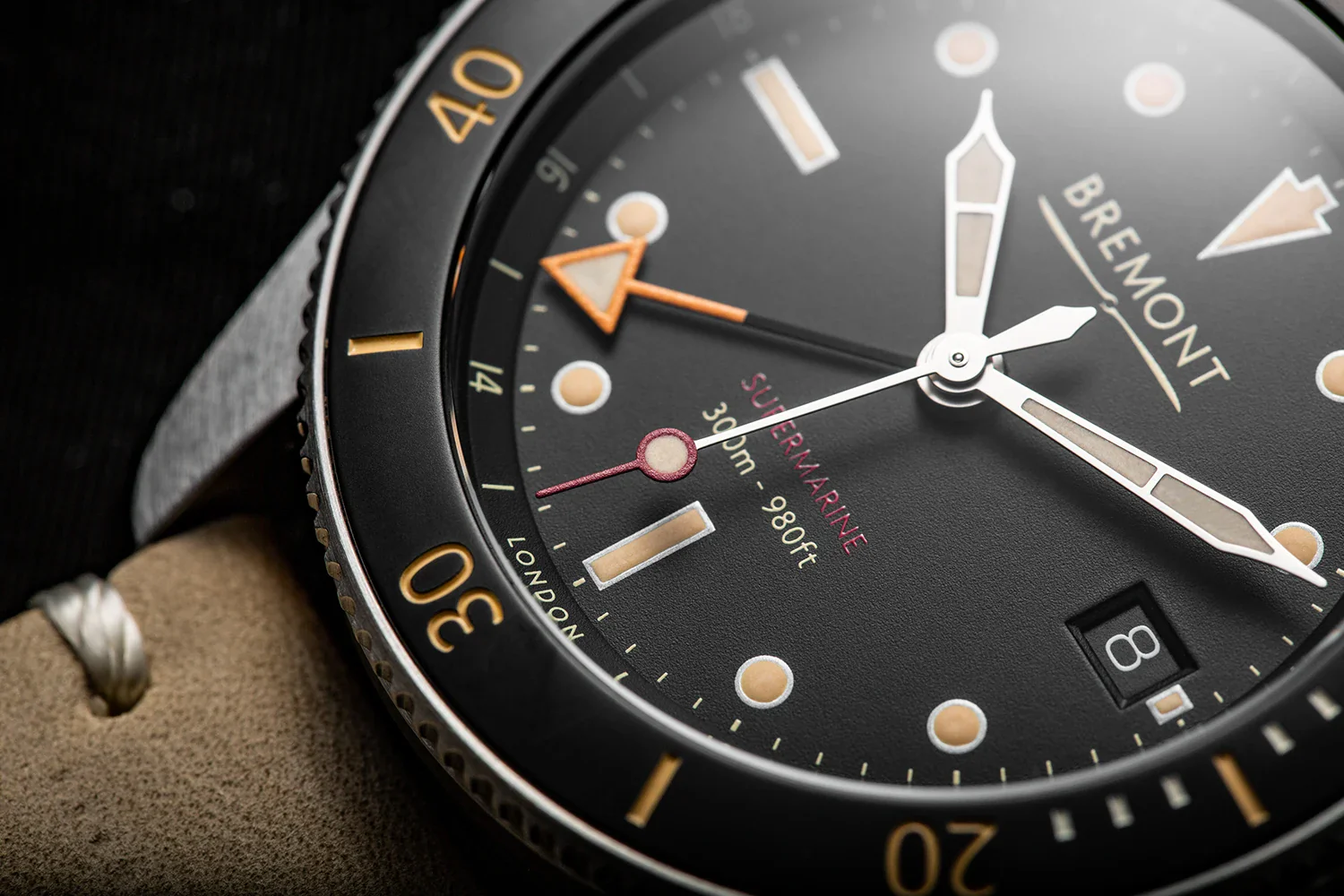
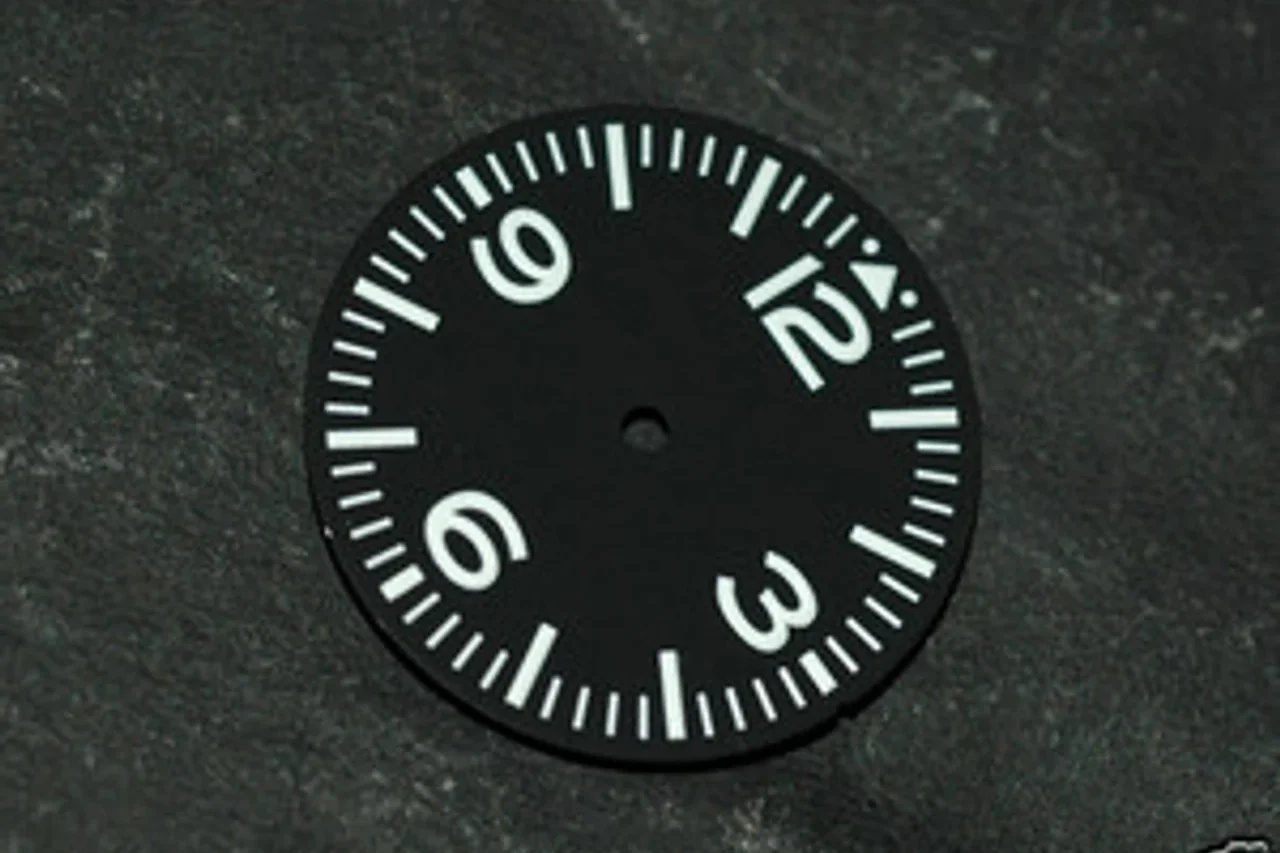
Legibility is crucial for both types of watches but in different contexts.
Dive watches prioritize maximum readability underwater and in low-light conditions. They feature large, luminous hands and markers that glow brightly in low-light conditions, ensuring divers can quickly read the time at a glance.
Some models also incorporate sapphire crystal for superior clarity, reducing glare and enhancing visibility underwater.
Aviation watches, while not always designed for extreme low-light conditions, still emphasize readability during flight. Pilots need clear, easily accessible information during complex operations, often involving a quick glance at their watch.
Though they may not rely on high-contrast visibility as divers do, aviation watches still feature large dials and legible numerals to support ease of reading in the cockpit.
6. Style/Aesthetic appeal
The style and aesthetic appeal of dive and aviation watches differ significantly. Dive watches tend to have a more rugged, sporty appearance, often featuring bold designs and thick cases while still looking good. Their designs reflect their functional purpose, with bold features that appeal to adventure enthusiasts.
In contrast, aviation watches may have a sleeker and more technical appearance, often inspired by vintage or military styles. This aesthetic makes them suitable for both casual and formal settings, appealing to those who appreciate precision and engineering in their timepieces.
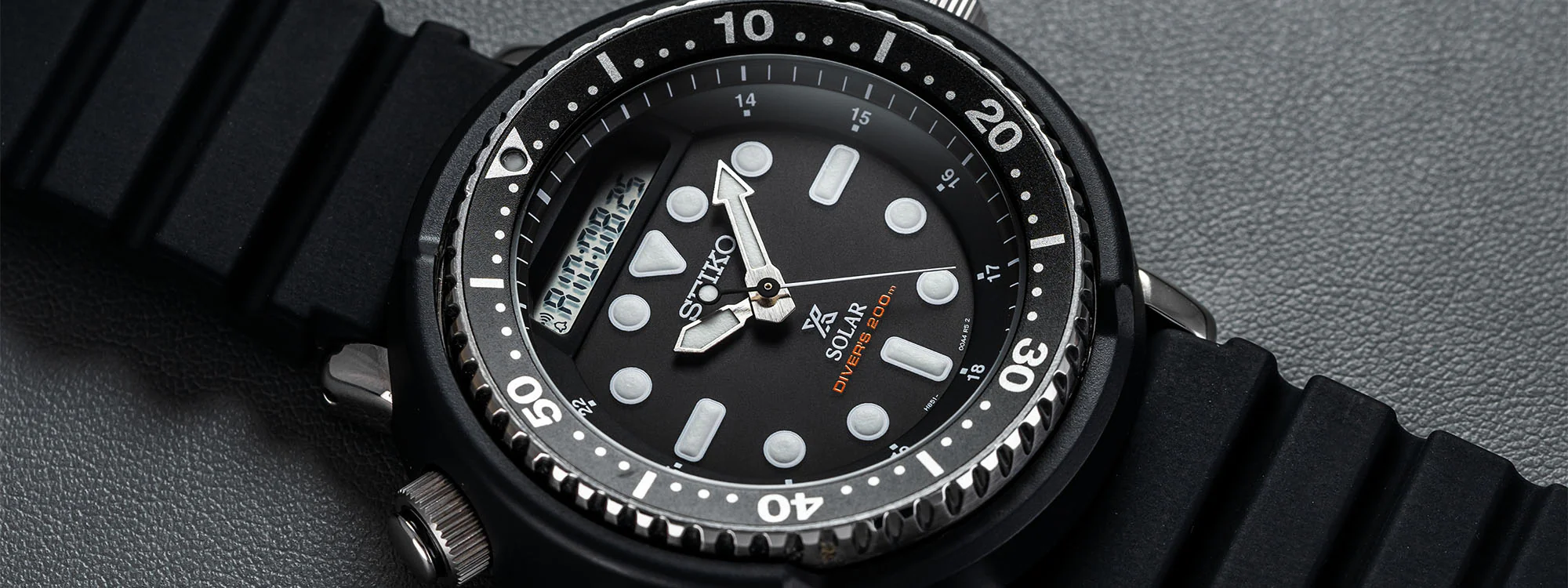
7. Budget
Dive watches often come in a wider price range, while aviation watches, especially those with advanced complications, tend to be more expensive. Indeed, the price difference between dive and aviation watches reflects the complexity and materials used in each.
Dive watches are available at various price points, starting from around $200 for a basic, functional piece, and rising into thousands for professional models with added features like helium escape valves and automatic movements. At the high end, luxury dive watches from brands like Rolex or Blancpain can cost well over $10,000, offering both functionality and style.
On the other hand, aviation watches generally begin at a slightly higher starting point, starting at around $300 for basic models. Watches with advanced features like chronographs, GMT functions, and slide rule bezels tend to range between $1,500 and $3,000. Premium aviation timepieces, such as those from IWC or Breitling, can easily climb to $10,000 or more, reflecting their craftsmanship and technical precision.
Final Thought
Ultimately, the differences between dive vs aviation watches boil down to their core functions and aesthetics. Dive watches offer water resistance and ruggedness, while aviation watches prioritize time-tracking features for pilots and travelers.
Choosing the right one depends on your lifestyle, whether you need durability for underwater exploration or advanced timekeeping for travel. Consider what features matter most to you and select the timepiece that aligns with both your functional needs and personal style.
People Also Read:

